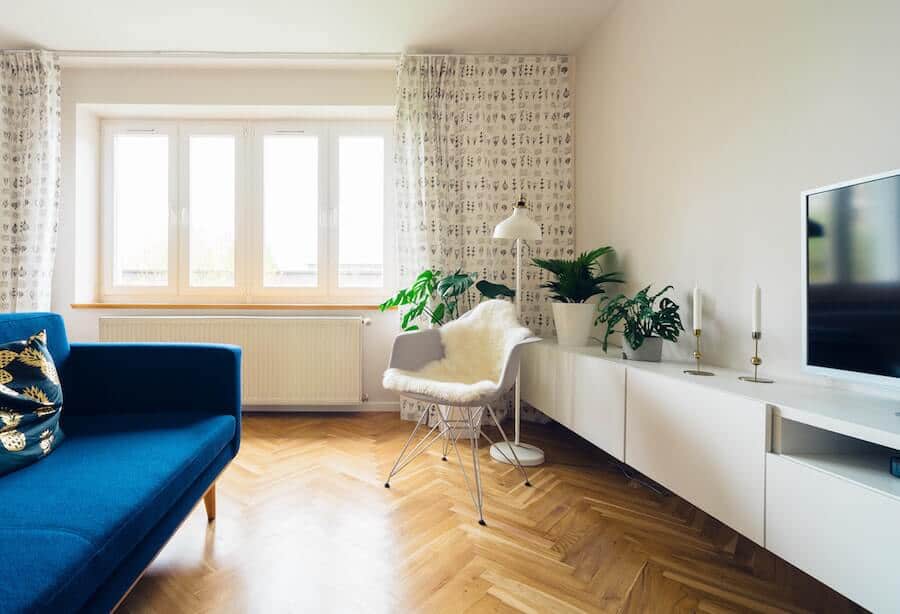How To Improve Ambient Comfort In Your Home
The word ambient gets tossed around the sales floor at IKEA more than Swedish meatballs. But to be fair, it does have a few varying definitions that all apply to the interior comforts of your home. In the most general sense, it applies to the surrounding area or environment of space, collectively encompassing light, sound, temperature, and air quality. It is the latter two we will focus on as together they have the greatest impact on household comfort.
Regardless of where you live, the number of occupants in your household, and the daily activities within, there are steps you can take to improve the ambiance of each and every room.
4 Ways to Improve Interior Air Quality and Temperature to Create a More Comfortable Home
Inspect Home Interior for Air Leaks
A crack, fracture, or air leak of any size in the trim, baseboards, roofing, or foundation in your home will have a direct impact on your ambient air temperature and air quality. Walk around the interior from basement to attic and inspect at-risk zones (by windows, doors, etc.) in and around your house and apply caulking and/or weather stripping to seal cracks and air leaks. Not only will this keep outside air (hot and cold alike) out, it will allow your furnace or AC unit (more on each below) to do what it needs to do to keep occupants in comfort.
Invite Plants Into Your Home
For those that skipped biology class (or was it chemistry?) the day your teacher covered photosynthesis, allow us to review. Through the process of photosynthesis, plants convert the carbon dioxide we exhale into fresh oxygen and can also remove toxins from the air we breathe. You can therefore see the importance of bringing in some greenery. To perform photosynthesis, plants require carbon dioxide, water, and sunlight, so it’s necessary to keep breathing (easy enough), water them as required, and ensure that you let natural light into your home.
The type of plants introduced into the house will also assist in interior air comfort. NASA (yes, that NASA) has identified the top 10 plants for photosynthesis, so be sure to bring this list with you before heading on over to your local home and garden center:
- Spathiphyllum (Peace Lily)
- Chrysanthemum morifolium
- Epipremnum aureum (Devil’s Ivy)
- Dracaena reflexa (Red-Edged Dracaena)
- Sansevieria trifasciata (Snake Plant)
- Rhapis excelsa (Lady Palm)
- Anthurium andraeanum (Flamingo Lily)
- Hedera helix (English Ivy)
- Gerbera jamesonii (Barberton Daisy)
- Ficus benjamina (Weeping Fig)
Repair (or Replace) Your Furnace
Any old furnace in disrepair can directly hurt ambient temperature and air quality and should therefore be attended to for that reason alone. But did you know that the relationship can be converse, with ambient air entering your run-down furnace system to negatively impact efficiencies?
Fuel-based furnaces expel heat through a vent stack. Since hot furnace gases are less dense and more buoyant than ambient air, they rise and create a differential pressure between the top and the bottom of the furnace. This differential is typically the source of a natural draft or negative pressure, which causes ambient air to leak into the furnace. A superior furnace system is manufactured to avoid both air leakage into the furnace and flue gas leakage into the ambient air. However, even under the assumption that you have a quality and properly installed furnace system, when enough time has passed your furnace may have developed a small crack, fracture, or opening around its doors, joints, or hearth. The issue is that even the smallest (and therefore ignored) fissure allows the furnace to draw cold air inward. Valuable fuel is then tasked to heat the cold air intrusion, wasting resources in the process. All of this can not only impact your heating bill, it will take its toll on your furnace and ultimately cause more issues that will then directly impact its ability to deliver optimal interior temperatures and air quality.
You must take every necessary step to reduce air infiltration in furnaces. But given that the naked eye will not be able to identify small leaks, you will need to invite in an expert to inspect your system from top to bottom. They will identify areas of concern and promptly repair where needed, or guide you towards a better furnace solution complete with professional installation.
Better Manage Your Air Conditioner
Air conditioners are often misunderstood. After installation, homeowners feel that all they need to do is flip the proverbial switch and let it do its good work. Granted, this can be the case IF the following steps are taken:
- Change or clean your AC filters every three months, or monthly in an especially hot summertime in Calgary.
- Have your AC system professionally serviced annually and attend to necessary repairs immediately. Don’t wait.
- Remove obstructions around AC vents to ensure proper airflow.
- Remove anything near your thermostat that can throw off its readings. Something as simple as a nearby lamp can cause a thermostat to ramp up AC even though a room is already at a comfortable temperature.
Lastly, it may be time to come to terms with the fact that the life of your AC unit has come to an end. A quality and properly installed unit has a lifespan of 10-15 years. However, if your unit is close to ten years old replacement often makes more sense as the cost of repair to maintain ambient comfort often results in diminishing returns. View preferred AC units here.
Take a big step towards improving air temperature and quality in your Calgary AB area home by contacting us today.


